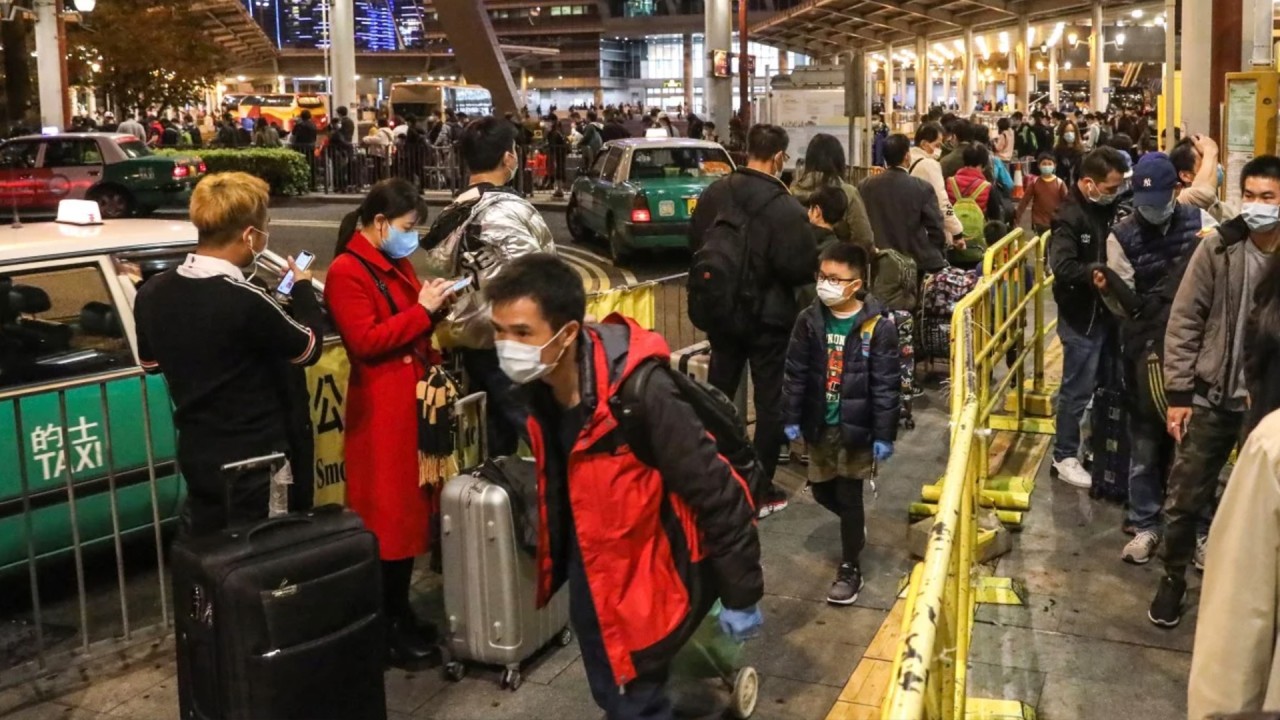
Hong Kong schoolchildren living in mainland China unlikely to return to class when face-to-face teaching resumes next week
- Education Bureau reveals preliminary plan to accommodate needs of 27,000 pupils living across the border
- Proposal includes partial reopening of Lok Ma Chau crossing, but gives no date leaving some principals disappointed
More than 2,000 senior secondary school students living in mainland China are expected to be among the first batch of pupils allowed to return to school in Hong Kong without needing to quarantine, the Education Bureau has revealed.
But the government’s preliminary plan, which it released on Wednesday, gives no timescale for that to happen, meaning children are unlikely to be able to return alongside their local classmates on May 27.
“As class resumption arrangements involve various areas including immigration control of the two places, epidemic prevention and control policies and transportation arrangements, we will continue to coordinate with different parties,”a spokesman for the bureau said.
“As a number of the fine implementation details have yet to be finalised, it is expected that the new arrangement will not come into effect on May 27.”

Under the proposals, the Lok Ma Chau border point, which has been closed since early February to contain the spread of Covid-19, would also be reopened, but only to allow cross-border pupils to travel to Hong Kong for school.
Some school principals told the Post they were disappointed the mainland pupils could not start school on time, and urged the authorities to open up more border points.
The bureau revealed further details of how cross-border pupils could travel to the city from their home in the mainland, after the city’s authorities first said in late April that those children would be exempted from the 14-day mandatory quarantine.
It has also been announced that Form Three to Form Five pupils would be the first group resuming classes and returning school on May 27.
With classes set to resume, cross-border pupils face commuting problems
The bureau spokesman said further consideration would be needed before fixing a date for the arrangement, and urged schools to help pupils to continue to learn at home.
According to the initial plan, cross-border pupils would be allowed to enter the city through Shenzhen Bay or Lok Ma Chau border point between Monday and Friday. Lok Ma Chau would be opened for schoolchildren but no one else.
“To avoid unnecessary social contact, cross-border pupils will take school buses to travel between schools and boundary control points upon arrival in Hong Kong,” the bureau said.
Other measures, such as submitting health declaration forms to Hong Kong officials, and virus test results to Shenzhen authorities, would also be required.

03:33
Coronavirus: cross-border commuters rush back to Hong Kong before city imposes quarantine measures
Schools in Tai Po and the North district are among those which have a higher proportion of cross-border students given their proximity to the mainland.
Veronica Yau Kit-ying, the principal at Fanling Kau Yan College said she was disappointed that students would not return together, but welcomed the reopening of the Lok Ma Chau border crossing.
She said teachers were preparing to live-stream lessons online for cross-border students, when local pupils returned to the classroom on Wednesday.
“Teachers have been trying out [the new way] of teaching. But in reality … there could be technical hiccups,” she said.
Help us understand what you are interested in so that we can improve SCMP and provide a better experience for you. We would like to invite you to take this five-minute survey on how you engage with SCMP and the news.


